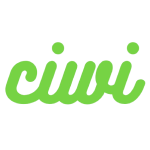Not All Traffic Should Enter Your Shopify Store: Why Filtering Traffic Saves Money
Driving more traffic to your Shopify store does not guarantee more sales.
Many store owners focus only on increasing traffic — through ads, influencers, or social media — but unqualified traffic often leads to low conversion rates, wasted budget, and confusing data in Shopify and GA4.Once traffic filtering strategies were applied, the store didn’t necessarily get more visitors — but it lost less money and achieved higher-quality traffic.
The Common Misconception: “More Traffic Means More Sales”
This belief causes several problems:
- Conversion rate drops as traffic increases
- Ad budgets grow faster than revenue
- ROAS becomes unstable
- Shopify and GA4 data become less reliable
- Campaign optimization becomes difficult
The main issue is not traffic volume.
The real problem is that most traffic is not ready to buy.
The Key Principle: Not All Traffic Should Reach Shopify
Shopify should be treated as your checkout environment, not your discovery platform.
Only users with real purchase intent should enter the store.Some types of traffic should not reach your Shopify store:
| Type of Traffic | Why It Hurts Performance |
| Visitors from low-converting regions | High ad cost and low buying power |
| BOT or spam traffic | Skews GA4 and Shopify data accuracy |
| Users who leave within a few seconds | Damages overall conversion rate |
| Visitors who don’t understand your language | Poor product comprehension |
| Awareness-stage visitors | They need education, not checkout pages |
Pushing every visitor into Shopify makes your data unreliable, and poor decision-making will follow.
How to Filter Traffic Before It Reaches Your Store
Use Ad Targeting to Exclude Low-Quality Audiences
Platforms like Google Ads and Meta Ads allow detailed filtering. You can:
- Exclude non-target countries
- Narrow age range
- Remove low-purchase-intent interests (e.g., “free”, “student”, “DIY”)
- Exclude existing customers
- Focus only on users with buying intent
Better targeting helps reduce CPC and increase conversion rate.
Detect Low-Quality Traffic Using GA4 Metrics
GA4 reveals user behavior and helps identify traffic that should be filtered.Key metrics to analyze:
| GA4 Metric | What It Indicates |
| Engagement Time < 5 seconds | Low interest or BOT traffic |
| Bounce Rate above 80% | Landing page mismatch |
| No returning visitors | Lack of purchase intent |
If many visitors leave instantly, send them to content first, not Shopify.
Match Traffic with Buying Intent (AIDA Framework)
Using the AIDA model helps determine who should and shouldn’t enter Shopify:
| Stage | Should They Enter Shopify? | Better Strategy |
| Awareness | No | Content, blog, TikTok, education |
| Interest | Possibly | Retargeting and landing pages |
| Desire | Yes | Offers, product pages |
| Action | Definitely | Checkout and Shopify store |
Visitors still in awareness or interest stages should not be sent directly to a checkout environment.
What Improved After Filtering Traffic
After limiting low-quality visitors from entering the store:
- Conversion rate increased
- Cost per acquisition dropped
- GA4 and Shopify data aligned better
- Ad budget was used more efficiently
- Scaling campaigns became safer and more predictable
The store did not rely on more traffic, but on better traffic.
Final Insight: Shopify Should Be a Filter, Not a Traffic Container
Shopify is not designed for cold audiences. Treat it as a destination for purchase-ready users, not a tool for testing interest.Do not pay to bring everyone to your store.
Pay to bring the right people to your store.This mindset reduces wasted ad spend, keeps analytics accurate, and builds a more scalable business foundation.


